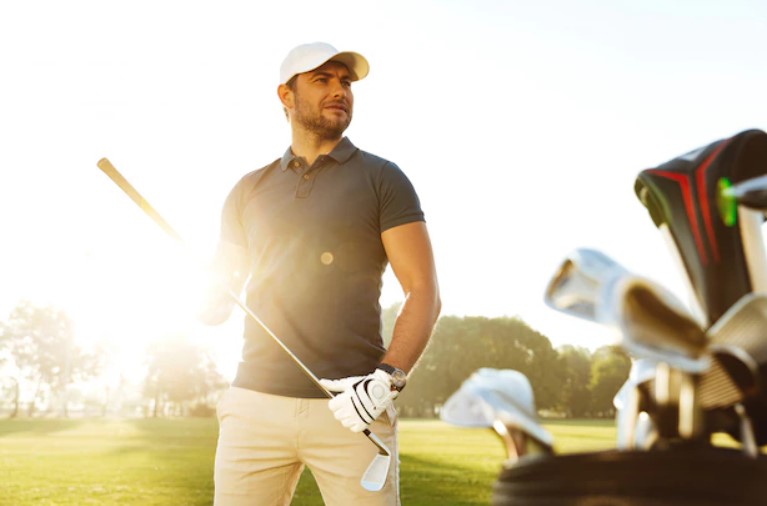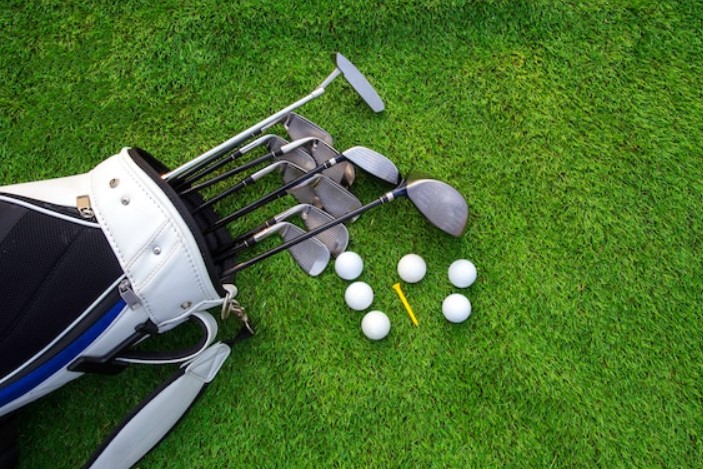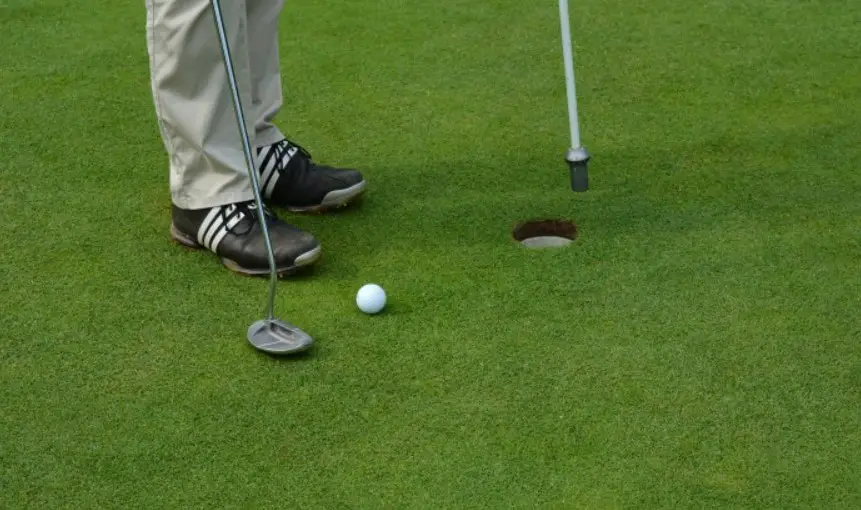Last Updated on October 8, 2023 by Alex PT
The size of the golf club you should purchase depends on your height and wrist-to-floor measurement. If you are unsure of your wrist-to-floor measurement, you can have it taken at a golf shop. Here is a general guide to golf club sizing:
- Height:
- Under 5’5″: -1 inch
- 5’5″ to 5’8″: Standard length
- 5’9″ to 6’1″: +0.5 inches
- 6’2″ and over: +1 inch
- Wrist-to-floor measurement:
- Under 31 inches: -1 inch
- 31 to 32 inches: Standard length
- 33 inches and over: +0.5 inches
What Size Of Golf Club Should I Purchase?
Choosing the correct size of golf clubs is essential to ensure that your equipment suits your body’s physical dimensions and playing style. Here are some guidelines to help you determine the right size:
- Height: Height is a crucial factor in determining the size of your golf clubs.
- Standard Length: Standard men’s clubs are typically designed for golfers with heights ranging from around 5’9″ to 6’2″. Standard women’s clubs are generally suitable for heights between approximately 5’5″ to 5’9″.
- Taller Golfers: If you are taller than the standard height range, you may need longer clubs. Clubs with extended shaft lengths can help maintain proper posture and swing mechanics for taller individuals.
- Shorter Golfers: If you are shorter than the standard range, consider shorter clubs to ensure better control and contact with the ball.
- Wrist-to-Floor Measurement: Another useful measurement is your wrist-to-floor distance, which helps determine the ideal club length. Measure the distance from the crease of your wrist to the floor while standing in a natural golf posture. This measurement can provide a more accurate club length recommendation.
- Fitting Sessions: Consider undergoing a professional club fitting session. Club fitters use various measurements, including your height, wrist-to-floor distance, and swing characteristics, to recommend the appropriate club lengths and specifications tailored to your unique swing.
- Grip Size: In addition to club length, grip size is also crucial. Golfers with larger hands might prefer thicker grips for better control, while those with smaller hands may opt for thinner grips.
- Swing Characteristics: Your swing tempo, speed, and swing path can also influence the type of clubs you need. For instance, golfers with faster swing speeds may require stiffer shafts.
- Trial and Testing: If possible, try different club lengths and types on the driving range or during a fitting session. This hands-on experience can help you determine which clubs feel most comfortable and provide the best performance.
- Consult a Professional: Seek advice from a professional club fitter or golf instructor. They have the expertise to assess your physical attributes and swing characteristics, making personalized recommendations for club size, shaft type, and other specifications.
GOLF CLUB SIZE MANUAL.

When picking a club for your height, Golf suggests you use the golf size manual below:
- 6’9″ – 7’0″ Add 2″ to normal Length
- 6’6″ – 6’9″ Add 1 1/2″ to normal Length
- 6’3″ – 6’6″ Add 1″ to normal Length
- 6’0″ – 6’3″ Add 1/2″ to normal Length
- 5’9″ – 6’0″ normal Length
- 5’6″ – 5’9″ Subtract 1/2″ from normal Length
- 5’3″ – 5’6″ Subtract 1″ from normal Length
- 5’0″ – 5’3″ Subtract 1 1/2″ from normal Length
- 4’9″ – 5’0″ Subtract 2″ from normal Length
Wrist-to-ground proportions are getting highly common, while an accumulating number of golf players have started making use of the golf club guide cross-referring height and wrist-to-ground ratios. Pertained to using only height or only wrist-to-ground ratios, the golf club length calculators seem to be more factual and meticulous when conducting a static fitting.
All-around Height

This is the initial step in figuring out your proper golf club size and length. It proceeds with your all-around height, size, and proportion! It is precisely the most extended primary strategy for recognizing the ample golfing club length you need, In spite of this, it does not convey reasonable proof for an acceptable perception and outcome. In the regular club fitting protocol, a player’s all-around height is utilized, only as a piece of the finished procedure of suiting a golf player for golf club length.
As asserted high up, The prevailing height and length itself is an introductory proportion for specifying and defining satisfactory golfing club altitude. So this system is more detailed, distinct, and factual, it is with great certainty that all-around height and size should be consolidated with another steady proportional method. The wrist-to-ground ratio.
Wrist-To-Ground-Proportion Or Ratio
Wrist-to-ground proportion is a universal frequently-used scheme for defining a factual golfing club size and length. The reason why it is so penetrating in club suiting is because it augments an extra layer to the measurement, which enhances accuracy.
Pertained with the exclusive protocol of only using a golf player’s all-round height and size, the wrist-to-ground probability speculates the other parts that can impact a golfing club length estimate: i.e. the size and length of the golf player’s arms and also the length and size of their limbs(legs). Two identical individuals of literally the same altitude can give birth to completely varied and unique wrist-to-ground appraisals, because of the discrepancies in their arm lengths and leg lengths.
When taking your wrist-to-ground probability measurement, you should stand perpendicularly on a formidable floor with your two limbs(arms) hanging literally down by your flanks. Wear a normal highway shoe or lurkers so there won’t be an influence on your size.
Why Golf Club Length Matters
Golf club length is a critical factor in a golfer’s performance and should not be overlooked. Here are detailed reasons why golf club length matters:
- Swing Efficiency and Consistency:
- Proper club length promotes a more natural and efficient swing. When a club is too long or too short, it can force you into awkward postures and positions, leading to inconsistency in your swing.
- Impact Point and Sweet Spot:
- The length of a club affects the point of impact on the clubface. Clubs that are too long or short can cause mis-hits, reducing your ability to consistently strike the ball on the sweet spot, which maximizes distance and accuracy.
- Distance Control:
- Club length directly influences the distance the ball travels. Longer clubs generally hit the ball farther, but if they’re too long, you may struggle with control and accuracy. Shorter clubs provide more control but may sacrifice distance.
- Posture and Alignment:
- Club length impacts your posture at address. Clubs that are too long may cause you to hunch over, while clubs that are too short can make you stand too upright. Correct posture and alignment are crucial for a consistent and accurate swing.
- Swing Speed and Tempo:
- The length of the club can affect your swing speed and tempo. Longer clubs may encourage a faster swing, while shorter clubs can slow down your tempo. Finding the right length helps maintain your ideal swing characteristics.
- Trajectory and Ball Flight:
- Club length can influence the trajectory and ball flight. Longer clubs tend to produce higher ball flights, while shorter clubs may produce lower trajectories. Selecting the right length can help you control the desired ball flight.
- Comfort and Confidence:
- Using clubs that are the right length for your body and swing style enhances your comfort and confidence on the course. Feeling comfortable with your clubs promotes a more relaxed and effective swing.
- Injury Prevention:
- Ill-fitted clubs can lead to poor swing mechanics and increase the risk of injury. Clubs that are too long can strain your back and shoulders, while clubs that are too short can force awkward wrist angles.
- Customization and Personalization:
- Golf club length is not one-size-fits-all. Custom fitting sessions consider your height, wrist-to-floor measurement, and swing characteristics to determine the ideal club length, ensuring your equipment is tailored to your needs.
- Optimal Performance:
- Ultimately, the right club length contributes to optimal performance. It helps you achieve better consistency, control, accuracy, and distance, leading to improved scores and overall enjoyment of the game.
Frequently Asked Questions.
What Are Golfing Club Sizes?
Golfing clubs that you acquire from a shop or store will vary from 32 – 48″ for a putter and a driver. Nevertheless, different golf player heights influence what size and length of golfing clubs you require.
How To Select Golf Club Sizes?
The first thing is using your height and then your wrist-to-ground measurement is a considerable means to obtain an idea of what the ex size and length of golfing clubs will be appropriate for you.
What Are Golfing Clubs Lengths And Sizes For Children And Juniors?
Golfing club sizes for children and youngsters are lower than the basic size of regular golfing clubs. For a shorter underling, golfing clubs will vary from “20″ to “26″ in length and for a taller youth, they will vary from “42″ to “30″ in length and size from a driver to a putter.
Final thoughts
In conclusion to what we’ve talked about, the length and size of the golfing club that you select certainly does and really matter. With several and numerous unique functions that are all manufactured to improve your game to a better state. It is also worth the time to deduce the reply to the topic.
References:
https://www.hirekogolf.com/what-length-golf-clubs-do-you-need
https://golfsupport.com/blog/quick-golf-club-size-guide-for-beginners/

Hi! I’m Alex PT. I hold a Bachelor’s degree in Sports Management from Indiana University and have over seven years of valuable experience working in a Sports Event Management Company. I founded SportBlurb with the passion for bringing you the latest, most insightful, and engaging content in the world of sports. So, whether you’re a die-hard fan or want to stay informed, I’ve got you covered!

